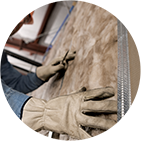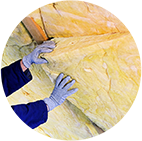When you need more insulation in your home, there’s a good chance that you need additional attic insulation. As one of the most significant sources of energy loss, the attic needs a lot of attention when it comes to insulating and maximizing energy efficiency.
But how much attic insulation do you need? To determine this, we need to look at the R-value.
What Is Insulation R-Value?
R-value is an efficiency rating for insulation. It refers to a particular insulation’s ability to resist heat flow. R-values vary based on:
- Material
- Density
- Thickness
The higher the value, the more insulating ability the product has. To achieve a higher attic insulation R-value, another layer of insulation needs to be added.
How Much Insulation Does Your Attic Need?
Different areas of your home have different R-value recommendations, and homes in different areas of the country have different recommendations based on the climate and cost effectiveness of the insulation.

Source: energystar.gov
For homes in the Seattle, Washington area, we’ve already established that the correct insulation R-value climate zone is 4. If you look at the chart above, you can see that the attic should achieve an R-value between R-38 and R-60, depending on the current insulation levels. In addition to climate, R-value also depends on the age of your home.
Nominal R-Value vs. Effective R-Value
The R-value indicated on the packaging tells how much thermal resistance the insulation provides per inch. Of course, this number is merely the nominal R-value. Other factors in the real world impact how well the insulation lives up to its rating.
Installation
If the insulation needs to be compressed so it fits into the space, this decreases attic insulation R-value by minimizing air pockets within the product and thus lowering its thermal resistance.
Temperature
A variety of insulation types—including fiberglass batts, expanded polystyrene (EPS) and extruded polystyrene (XPS)—can be more effective when the temperature drops outside. Oddly, when it’s above 60 degrees, the insulation can perform below its nominal R-value.
Temperature has the opposite effect on one popular type of insulation called polyisocyanurate, often simply called polyiso. This insulation decreases in R-value as it gets colder outside. Solutions for this problem include using more polyiso, covering it with another type of insulation to keep it warmer, or counting on exterior insulation instead of cavity insulation to meet your requirements.
Attic Insulation for Seattle Area Homes
This is a lot of information, but keep in mind that you won’t be on your own! Professionals can complete your insulation installation so it’s done correctly.
Need insulation services in Seattle, Arlington or a surrounding area in Washington? The team at Pacific Partners Insulation North has you covered. Whether you’re looking to add more blown-in insulation to your attic or need spray foam for multiple areas of your home, contact us today!





